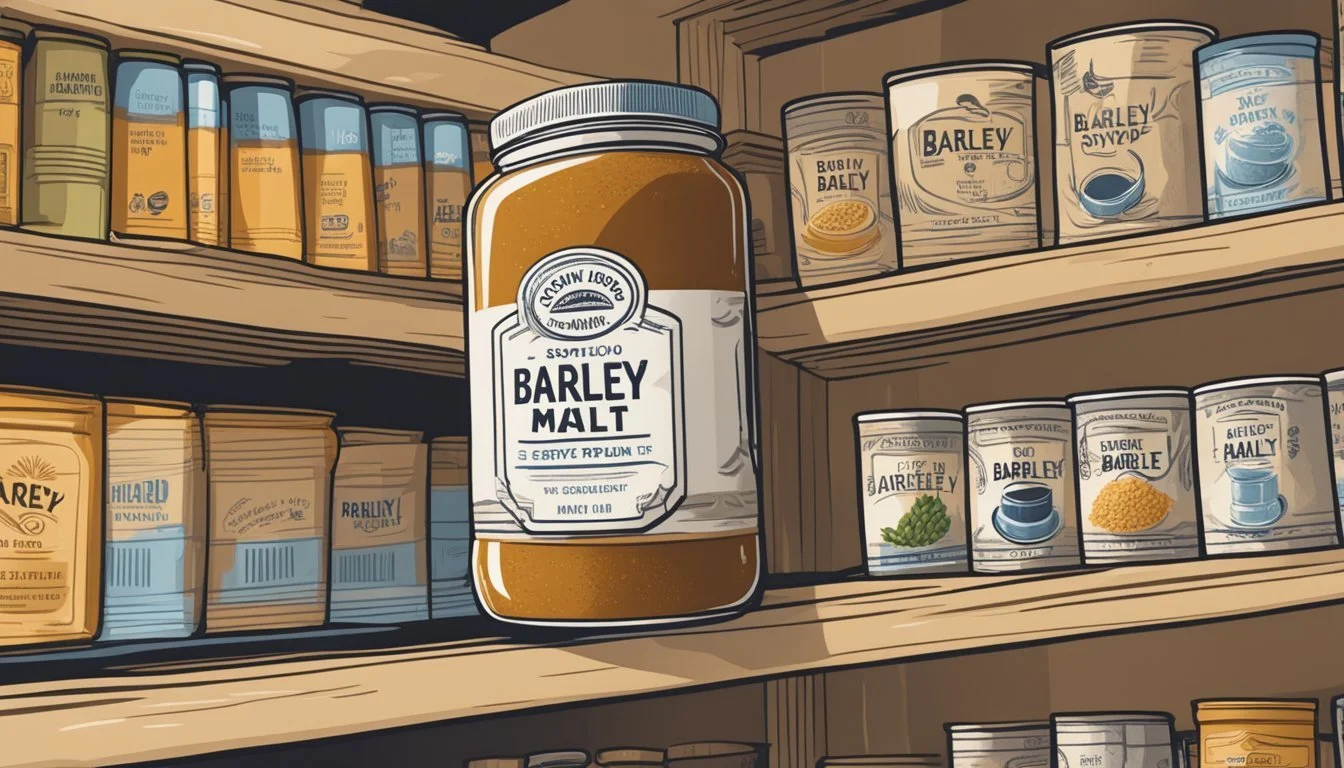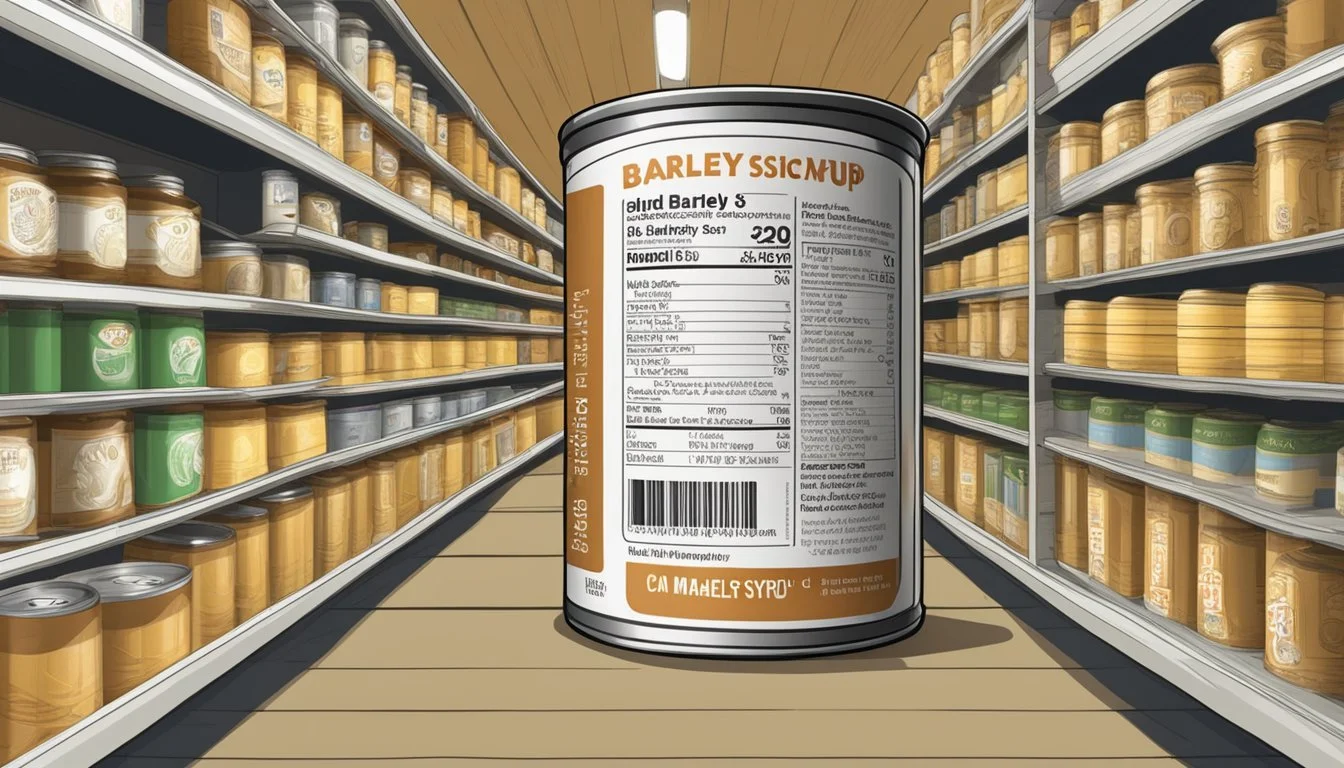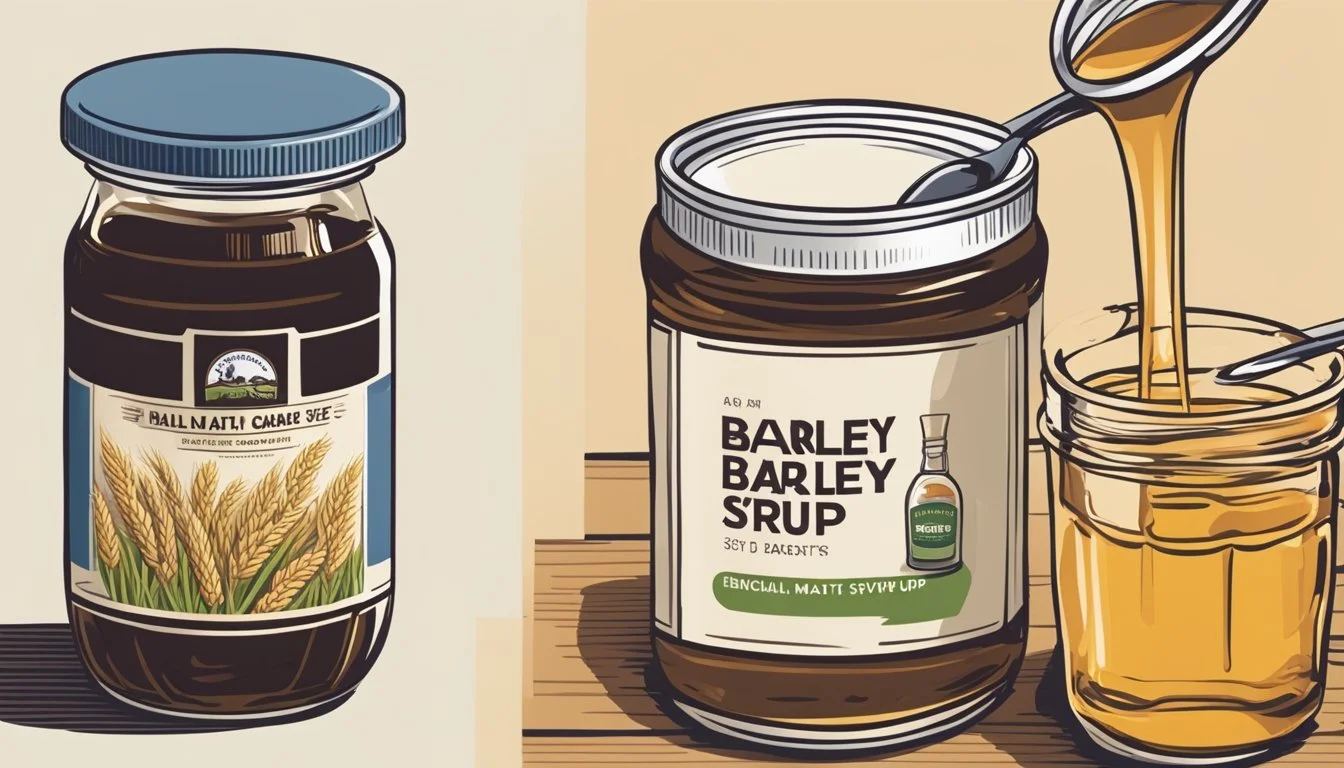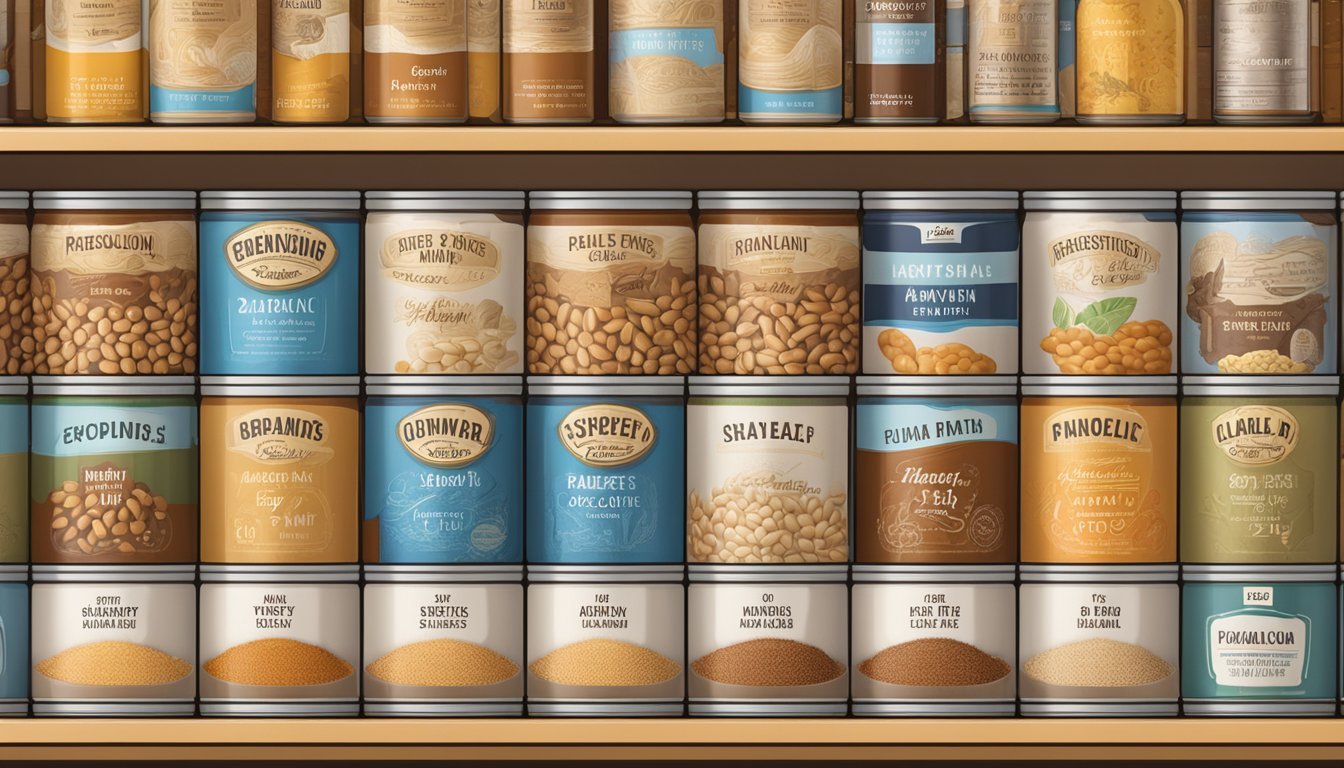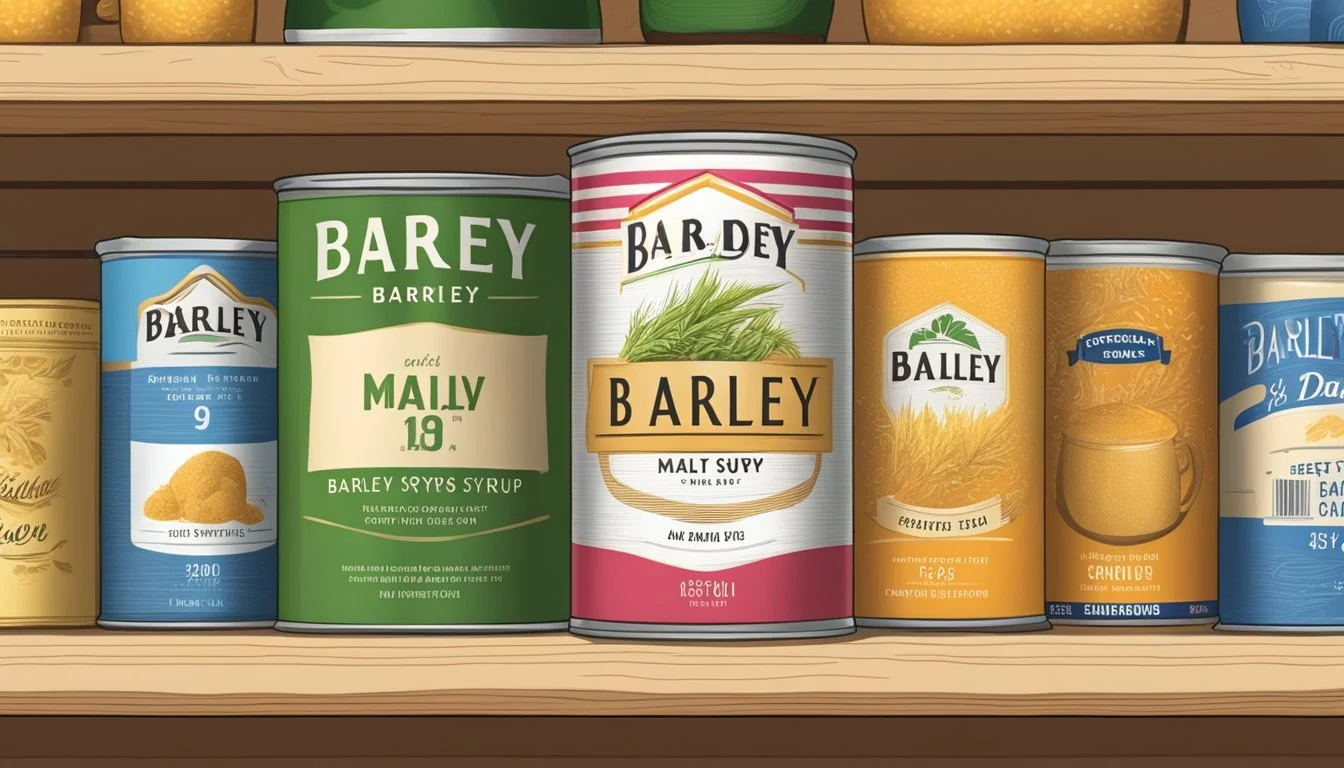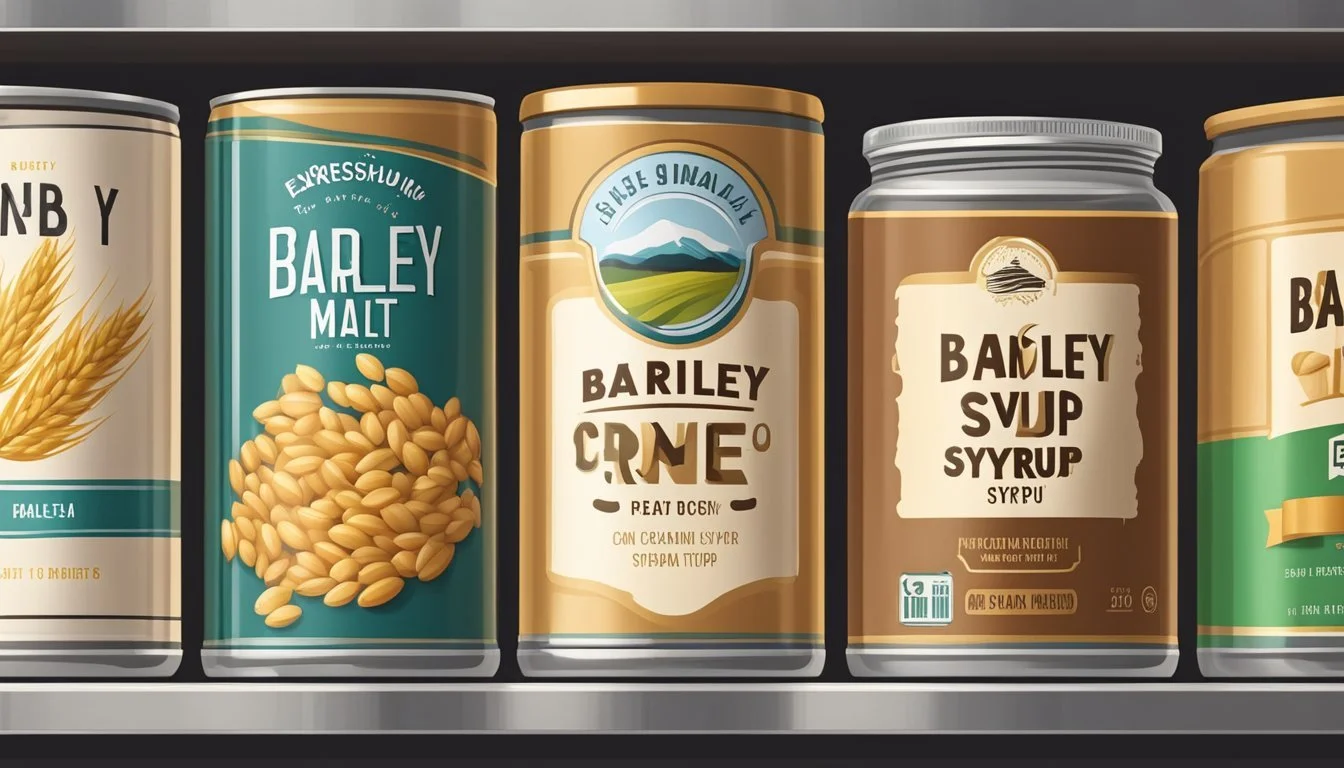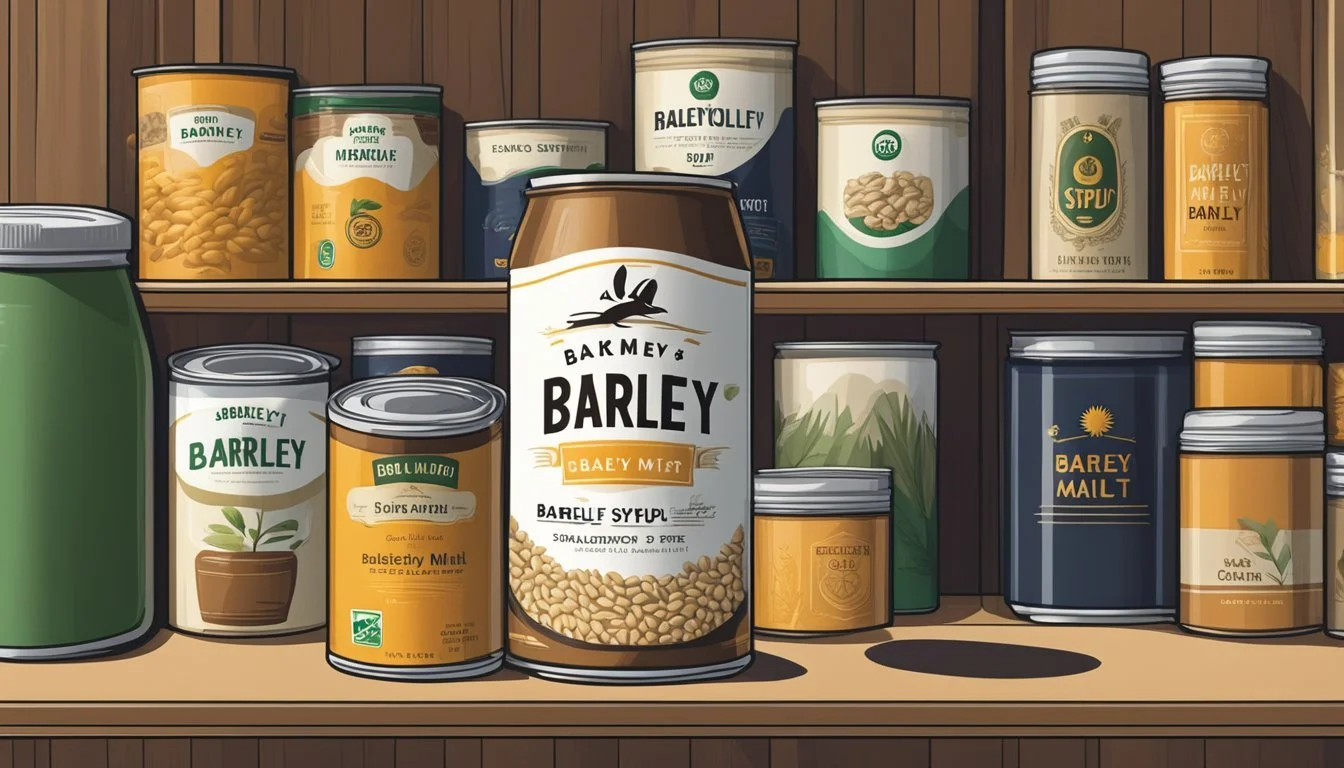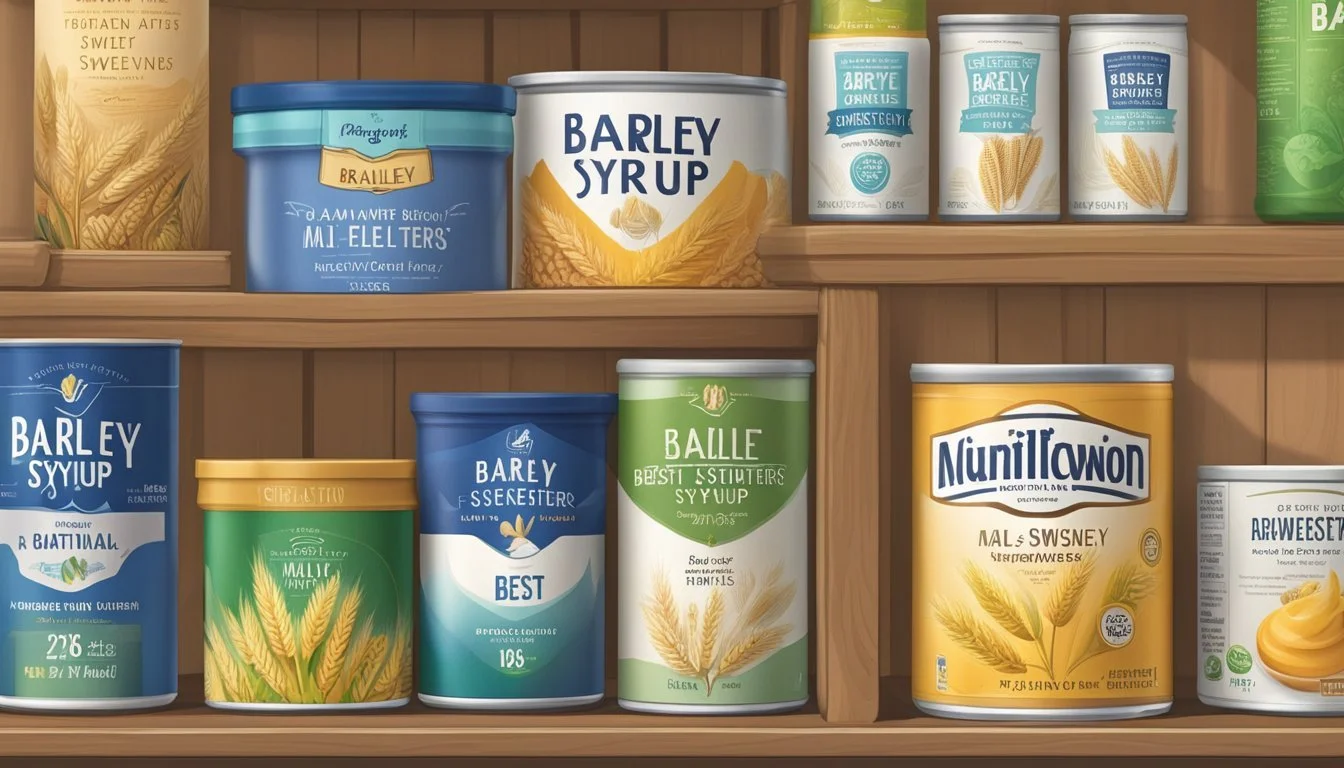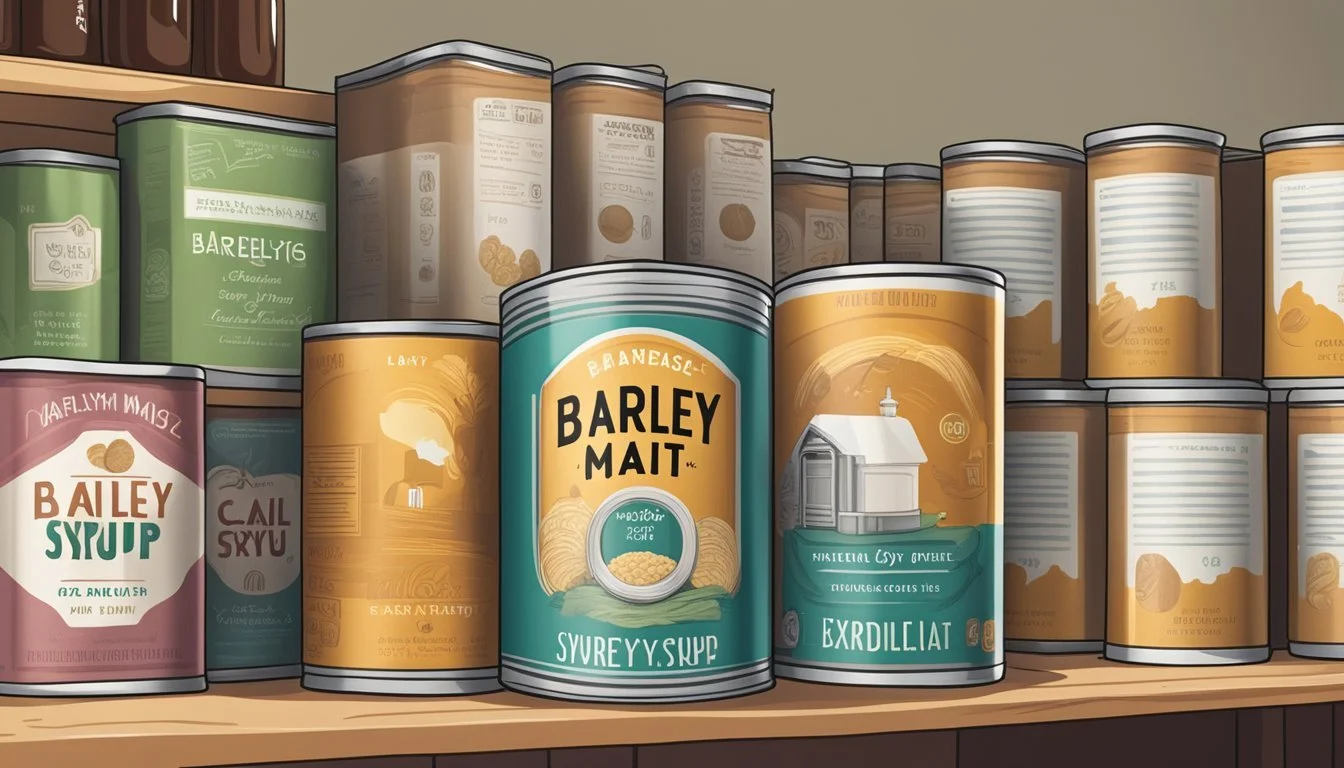How Long Does Canned Barley Malt Syrup Last?
Shelf Life and Storage Tips
Barley malt syrup is a natural sweetener derived from sprouted barley, which is dried and then cooked to produce a thick, sticky syrup. Its distinctive, malty flavor sets it apart from other sweeteners and makes it a favorite ingredient in various recipes, particularly in the realm of baking and brewing. The assurance of its quality over time is a point of consideration for consumers and producers alike, as maintaining its unique flavor is essential for the finished product's taste profile.
The shelf life of canned barley malt syrup is generally about two years when stored correctly. Factors affecting its longevity include the integrity of the can's seal, the storage temperature, and exposure to light. To best preserve the syrup's quality, it should be kept in a cool, dark place, and once opened, tightly sealed to prevent contamination and moisture ingress. It's important to inspect the syrup for signs of spoilage, such as mold or an off odor, before use, as these indicate that the syrup should no longer be consumed.
Understanding Barley Malt Syrup
Barley malt syrup emerges from sprouted barley, offering a distinctive flavor and nutritional profile. It serves as an unrefined sweetener in various culinary applications.
Production Process
Barley malt syrup is produced by malting barley grains. This involves a multi-step process beginning with sprouting the barley, enabling naturally occurring enzymes to convert the grain’s starches into sugars. After sprouting, the grains are dried and roasted, which concentrates the sugars and develops the syrup's characteristic rich flavor.
Nutritional Profile
This syrup is noted for its nutritional content, including protein, amino acids, vitamins, and minerals. Its unrefined nature means that it keeps a higher nutrient content than many other sweeteners. However, the content of vitamins and minerals is relatively low and should not be relied upon as a significant nutritional source.
Composition:
Proteins: Contributes a small amount of amino acids.
Complex Carbohydrates: Provides energy and helps maintain stable blood sugar levels.
Simple Sugars: Primarily maltose at around 65%.
Composition and Characteristics
Barley malt syrup is primarily composed of maltose, a type of sugar, and contains complex carbohydrates and a small amount of protein. It has a lower glycemic index compared to other sweeteners, which may provide health benefits by preventing spikes in blood sugar levels. Its unique characteristics include:
Color and Flavor:
Deep brown color
Rich, malty flavor profile
Physical Attributes:
Thicker consistency than many sweeteners
Can be more difficult to dissolve due to its viscosity
Sweetness:
Less sweet than syrups like maple or rice syrup
Culinary Uses of Barley Malt Syrup
Barley malt syrup, with its distinct flavor, proves to be a versatile ingredient in both food and beverage preparation. It enriches recipes with a robust sweetness and a hint of nuttiness.
Baking and Cooking Applications
In baking, barley malt syrup is often used as a substitute for other sweeteners. Its malty flavor and natural origin make it a favorable ingredient for bread, particularly in enhancing the crust of bagels and traditional loaves. Due to its enzymatic activity, it can also improve the action of yeast, which is beneficial in leavened bakery products. Here are a few specific ways in which barley malt syrup can be utilized in the kitchen:
Breads & Bagels: Adds a rich flavor and helps with yeast fermentation.
Muffins & Pancakes: Imparts moisture and subtle sweetness.
Desserts & Ice Cream: Serves as a natural sweetener and flavor enhancer.
Gingerbread: Contributes to the characteristic depth of flavor.
Hot Cereals: Drizzled over for added sweetness and malt flavor.
Malty flavors carry through not just in breads but in other desserts as well, where its less-intense sweetness compared to other syrups is often desirable.
Beverage Enhancements
Barley malt syrup is also a key player in the world of beverages. Its primary role is in beer and homebrewing, where it is an essential component for fermentable sugars which yeasts convert into alcohol and carbon dioxide. The syrup provides both flavor and the necessary sugars for fermentation. Beyond alcohol production, barley malt syrup can also be a sweetener in non-alcoholic beverages where a subtle sweetness is preferred.
Beer & Homebrewing: A source of fermentable sugars and contributes to the malt character of the beer.
Non-Alcoholic Drinks: Adds a touch of sweetness with a malty nuance.
Chefs and home cooks alike leverage barley malt syrup for its culinary versatility and unique flavor profile. Whether in the oven or in the brew kettle, its applications are broad, and its results, when used appropriately, are consistently appealing.
Storage Guidelines
To maintain the quality and extend the shelf life of canned barley malt syrup, proper storage conditions are essential. Adhering to recommended guidelines helps in safeguarding the syrup from spoilage and oxidation.
Optimal Storage Conditions
Temperature: Store in a cool, dry place where the temperature is consistently between 50° and 70° F (10° - 21° C).
Moisture: Keep the syrup away from moisture to prevent mold and bacterial growth.
Container Integrity: Ensure that the can or container is air-tight to avoid oxidation. For opened cans, transferring to an air-tight container is advantageous.
Light Exposure: Protect the syrup from light, preferably storing it in a dark place or opaque container to minimize degradation.
Shelf Life Expectancy
Storage Location Estimated Shelf Life Pantry (unopened) Up to 2 years Refrigerator (opened) Several months
A sealed can of barley malt syrup may remain fresh for approximately two years if stored properly.
Once opened, it's best to store syrup in the refrigerator to extend its shelf life, ensuring that any container used is sealed well to prevent contamination and spoilage.
Taste and Flavor Comparison
This section provides an insight into the distinct flavor profile of barley malt syrup and how it compares to other sweeteners.
Flavor Profile
Barley malt syrup is characterized by a distinct taste that is less sweet than traditional sugars. Its flavor is a complex blend reminiscent of a less bitter molasses combined with a nutty, malty character often found in cereals. The primary sugar in barley malt syrup is maltose, which imparts a milder sweetness compared to the more intense sucrose found in refined sugars.
Substitutes and Alternatives
When substituting barley malt syrup for other sweeteners, it's important to understand their flavor contributions:
Honey: Substituting in a 1:1 ratio will result in a less pronounced malt flavor but maintain a similar level of sweetness.
Maple Syrup: Also replaced at a 1:1 ratio, however, maple syrup's distinctive flavor might be overshadowed by the stronger malt taste of barley syrup.
Molasses: Dark molasses has a richness that barley malt syrup lacks, yet it incorporates a similar caramel note. Replace with more barley malt syrup to achieve comparable sweetness.
Blackstrap Molasses: Known for its robust flavor, blackstrap molasses is much more intense than barley malt syrup, which is milder and sweeter.
Rice Syrup: A similar consistency and lower level of sweetness like barley malt syrup, but with a lighter, less pronounced flavor.
Brown Sugar: This sweetener adds a hint of caramel that can resemble the malty flavor, but it is sweeter and more potent, so adjustments in quantity are needed.
Barley malt syrup can often be used directly in place of these alternatives, particularly in recipes where its rich flavor and distinctive malt profile are desired.
Preservation and Longevity Tips
Effective preservation of canned barley malt syrup hinges on optimal storage conditions and proper handling to prevent spoilage. These strategies aim to maintain the syrup's thick consistency and quality over time.
Preventing Spoilage
When preserving barley malt syrup, one must guard against factors that can lead to spoilage. This includes protection from light and ensuring the lid is securely sealed after each use.
Light Exposure: Store the syrup in a dark place to prevent degradation of quality caused by exposure to light.
Airtight Containers: If transferred from its original can, use an airtight container to prevent the ingress of air, which can lead to spoilage.
Maximizing Freshness
To ensure canned barley malt syrup retains its optimal quality and thick consistency, certain practices should be routinely followed.
Refrigerated Storage: Keep the syrup in the fridge to slow down any fermentation process and maintain its freshness.
Consistency Check: Regularly check the syrup's consistency. It should remain thick; any noticeable thinning could indicate spoilage.
By adhering to these focused strategies, one can significantly extend the longevity and preserve the quality of their canned barley malt syrup.
Understanding Malt Extracts
Malt extract, which comes in both liquid (LME) and dry (DME) forms, is a concentrated substance derived from the mashing process of barley used in homebrewing for fermentation to create beer.
Liquid vs. Dry Malt Extract
Liquid Malt Extract (LME) typically boasts a longer shelf life due to its moisture content and syrup-like consistency. However, it is often more susceptible to degradation over time and is best stored in a cool, dark place.
Shelf life: Approximately 2 years (unopened)
Appearance: Thick syrup
Storage: Airtight container, away from light
Dry Malt Extract (DME), on the other hand, is a powdered form of malt extract and is generally more stable than LME.
Shelf life: Often exceeds 2 years when stored properly
Appearance: Fine powder
Storage: Dry environment, sealed container
Use in Homebrewing
In homebrewing, malt extract is used as a base for the wort, the liquid extracted during the mashing process that contains the sugars that will be fermented by yeast to produce alcohol.
LME is handy because it dissolves easily into the brewing liquid and simplifies the brewing process.
DME offers brewers more control over the final beer’s color and potential for longer storage, making it preferable for long-term usage.
Both forms are crucial for beer's flavor profile, fermentation success, and the overall quality of the final product.
Health Considerations
When assessing the health aspects of canned barley malt syrup, one should consider both dietary restrictions and nutritional benefits. This natural sweetener’s impact on health is influenced by its components and should be weighed carefully by consumers.
Dietary Concerns
Barley malt syrup contains gluten, which makes it unsuitable for individuals following a gluten-free diet. Moreover, as it is rich in maltose, which can influence blood sugar levels, those managing diabetes should use it cautiously. It’s less sweet than regular sugar, potentially leading to higher consumption to achieve the same level of sweetness, impacting dietary management.
Gluten: Present due to the barley source.
Sugars: Primarily maltose; moderate impact on blood sugar.
Nutritional Advantages
Despite some concerns, barley malt syrup offers several nutritional advantages. It is a source of macronutrients like protein and provides trace amounts of minerals, including iron and potassium. These elements contribute to the overall nutritional profile of the syrup, although it should be consumed in moderation within a balanced diet.
Protein: Contributes to muscle repair and growth.
Iron: Essential for blood production and oxygen transport.
Potassium: Key mineral for cell function and heart health.
Nutrient Benefit Protein Aids in muscle maintenance and the body’s repair processes Iron Crucial for hemoglobin formation and anemia prevention Potassium Supports nervous system and muscle function
The health benefits of barley malt syrup are best realized when integrated into a diet with consideration for its sugar content and gluten presence.
Barley Malt Syrup in Diet-Specific Cooking
Barley malt syrup is a distinctive sweetener used in various diet-specific cooking applications. It's known for its robust flavor, nutritive value, and role as an alternative to refined sugars.
Vegan Applications
Barley malt syrup serves as a popular sweetener in vegan cooking due to its plant-based origin. Vegans often use it as an alternative to honey (What wine goes well with honey?) in recipes such as:
Baked goods: It contributes to a rich, moist texture in cakes and muffins.
Homemade granola: It acts as a binding agent, giving clusters a sticky, sweet coating.
In vegan recipes, barley malt syrup is valued for its natural sweetness and the malty flavor it imparts, which can enhance the profile of vegan dishes without the use of animal products.
Gluten-Free Recipes
While barley malt syrup is derived from barley, which contains gluten, it can sometimes be found in gluten-removed forms suitable for those with gluten sensitivity. However, it is important to note:
Gluten-Free Baking: Barley malt syrup can be used in gluten-free recipes only if it has been certified as gluten-removed or gluten-free.
Label Checking: Individuals following a strict gluten-free diet must diligently check labels to ensure the product meets gluten-free standards.
For cooking and baking, chefs must source a gluten-free variation of barley malt syrup when preparing dishes for individuals with gluten intolerance or celiac disease.
Comparative Sweetness Analysis
In evaluating barley malt syrup, its lower sweetness level compared to other common sweeteners and the necessary adjustments in recipes are pivotal considerations.
Compared to Other Sweeteners
Barley malt syrup exhibits a distinct profile in sweetness when juxtaposed with alternatives like molasses, honey, and refined sugars. Its sweetness primarily stems from maltose, a disaccharide sugar, which is approximately 50% as sweet as sucrose (table sugar). Here's a quick comparison:
Honey: Significantly sweeter, nearly twice as sweet as barley malt syrup.
Molasses: Slightly more robust with a sweetness ratio of barley malt syrup to molasses at 1 : 0.67.
In terms of mouthfeel, barley malt syrup often provides a richer texture due to the presence of complex carbohydrates alongside simpler sugars. This can impact the overall experience beyond mere sweetness.
Adjusting Sweetness in Recipes
When substituting barley malt syrup for other sweeteners in a recipe, one must consider both sweetness levels and moisture content. For example:
Refined Sugar: Replace 1 cup of sugar with approximately 1 1/3 cups of barley malt syrup.
Honey: As it's less sweet, more barley malt syrup is needed; begin with a 1:1.25 ratio and adjust to taste.
Additionally, due to its viscosity and moisture content, barley malt syrup can alter the texture of baked goods, potentially making them denser or chewier. These adjustments often require a reduction in other liquids to maintain the desired consistency, implying a trial-and-error approach to achieve the perfect balance.
Specialty Cooking with Barley Malt Syrup
Barley malt syrup offers a unique flavor and rich color that can elevate a variety of dishes, from baked goods to savory glazes. Its distinct flavor profile is an asset in creative cooking.
Unique Uses in Baking
Bakers often seek out barley malt syrup for its deep, earthy sweetness and ability to add a rich color to their creations. It is particularly effective in recipes for bread, where it not only contributes to the browning of the crust but also adds a subtle malt flavor complexity that refined sugars lack.
Pancakes and Waffles: A drizzle of barley malt syrup enhances the breakfast classics with a rich depth of flavor.
Muffins: Incorporating barley malt syrup into muffin recipes brings a moist texture and a malt note that complements fruit and nut ingredients.
Enhancing Savory Dishes
While commonly associated with sweetness, barley malt syrup also shines in savory dishes. It acts as a magnificent glaze for sweet potatoes, coating them in a glossy sheen while introducing notes that balance their natural sweetness.
Sauces and Glazes: Barley malt syrup is an excellent addition to barbecue sauces, imparting a distinct malt undertone and a hint of sweetness.
Vegan Butter Glaze: A combination of barley malt syrup with vegan butter makes a delicious glaze that's perfect for enhancing the flavor and appearance of a variety of vegetables.
Substitute Sweeteners
When seeking alternatives to barley malt syrup, one should consider the taste profiles and consistencies of potential substitutes to ensure they complement the recipe appropriately.
Alternatives to Barley Malt Syrup
Barley malt syrup is a unique ingredient known for its malty flavor and viscous consistency. In instances where barley malt syrup is unavailable, several sweeteners can serve as alternatives. These substitutes include:
Maple Syrup: Similar in viscosity, it brings a characteristically woody sweetness.
Brown Rice Syrup: Offers a mild flavor and a consistency that closely resembles barley malt syrup, making it an excellent replacement on a 1:1 basis.
Honey: While sweeter than barley malt syrup, honey's thick texture allows it to be a suitable substitute, especially in baking.
Brown Sugar: Dissolved in water to make a simple syrup, brown sugar can mimic the molasses undertones present in barley malt syrup.
When using these alternative sweeteners, one must adjust quantities and expectations of sweetness and flavor accordingly.
Comparison to Molasses and Honey
Molasses and Honey are two sweeteners frequently compared to barley malt syrup due to their texture and natural origins.
Molasses:
Regular Molasses: Provides a warm, sweet flavor suitable for many of the same applications as barley malt syrup.
Blackstrap Molasses: It is more robust and bittersweet, recommended at a lower replacement ratio of about 2/3 cup to every 1 cup of barley malt syrup.
Honey:
Offers a distinctly floral sweetness with a thick consistency. In recipes originally calling for barley malt syrup, honey delivers a different flavor profile and a higher level of sweetness.
Substitutes such as molasses and honey should be used with consideration of their unique taste and how they interact with other flavors within the recipe.
Storage and Spoilage FAQs
Barley malt syrup is a natural sweetener that, when stored properly, can have an extended shelf life. Understanding the best methods to store this product and recognizing signs of spoilage are key to maintaining its quality and usability.
Common Questions
Q: How long does canned barley malt syrup last?
A: Properly stored in a cool, dry place, canned barley malt syrup typically remains fresh for up to two years. Once opened, storing it in the refrigerator is recommended to retain its quality.
Q: What are the signs of spoilage in barley malt syrup?
A: Indicators of spoilage include an off smell, mold growth, or changes in consistency. If the syrup develops flakes or appears cloudy, it should be discarded.
Best Practices for Shelf Life Extension
Storing Unopened Barley Malt Syrup:
Temperature: Keep at room temperature, away from direct sunlight and heat sources.
Environment: A dry pantry or cabinet is ideal to prevent moisture exposure.
After Opening:
Refrigerator: Store in the fridge to prolong freshness.
Container: Use an airtight container to prevent contamination and moisture.
Cleaning: Wipe the rim and seal of the jar before closing to prevent syrup from crystallizing and attracting bacteria.
Check Table for Quick Reference:
Storage Location Expected Shelf Life Pantry (Unopened) Up to 2 years Refrigerator Extends freshness post-opening
By following these storage guidelines, barley malt syrup can be kept at optimal freshness for extended use, ensuring it remains a flavorful addition to various recipes.
Barley Malt Syrup in Various Cuisines
Barley malt syrup, known for its rich, dark color and distinctive malt flavor, is a versatile ingredient utilized across diverse culinary traditions. This unrefined sweetener has found its way from traditional uses to modern culinary innovations, enriching an array of dishes with its unique taste.
Traditional Uses
In traditional baking, barley malt syrup is a key component in pumpernickel bread, where it imparts a deep, nuanced sweetness and a darker color to the crust. Its application in creating gingerbread and cookies is well-documented, offering a subtle malt flavor that complements the spicy profiles of such baked goods. Notably, it is instrumental in the production of beer, where its high maltose content contributes to the fermentation process and flavor profile.
Traditional Baked Goods:
Pumpernickel Bread
Gingerbread
Cookies
Modern Culinary Innovations
Chefs and home cooks have embraced barley malt syrup, experimenting with its inclusion in innovative recipes. Its adaptability as a sweetener has paved the way for it to be used in glazes for roasted vegetables, such as sweet potatoes, and as an enriching addition to sauces and marinades. The syrup's unique properties also make it an excellent ingredient for vegan cuisine, offering a desirable sweetness without the use of animal products.
Culinary Enhancements:
Vegetable glazes (e.g., sweet potatoes)
Sauces and Marinades
Vegan Sweetener Alternative
By marrying the traditional with the new, barley malt syrup continues to prove its enduring appeal and culinary significance in kitchens worldwide.
Closing Remarks
When considering the longevity of canned barley malt syrup, it is essential to respect proper storage techniques to maintain its quality. Unopened cans, when kept in a cool, dry environment, can typically last up to two years. Once opened, the syrup should be stored in an air-tight container with a clean lid and rim to prevent contamination and extend shelf life.
Storage Recommendations:
Unopened: Keep in a cool, dry place for up to 2 years.
Opened: Refrigerate in air-tight container; use a clean cloth to wipe jar edges.
One should note that barley malt syrup, being a natural product, might degrade over time. Its shelf life is influenced by factors such as temperature, exposure to air, and moisture. Regular inspections for mold or off-flavors can help ensure the syrup is still fit for culinary uses.
Barley malt syrup serves as an alternative sweetener, endowed with a distinct, rich flavor profile that enhances recipes, including baked goods and sauces. Its nutritional benefits, while no substitute for a varied diet, add value beyond mere sweetness.
Culinary and Health Snapshot:
Culinary Use: Adds richness to baked goods and sauces.
Health Benefit: Contains small amounts of essential minerals.
In summary, barley malt syrup is a resilient sweetener but requires careful handling to ensure it preserves its flavor and benefits. Consumers should follow storage guidelines closely to ensure the syrup remains a viable element in their culinary repertoire.

